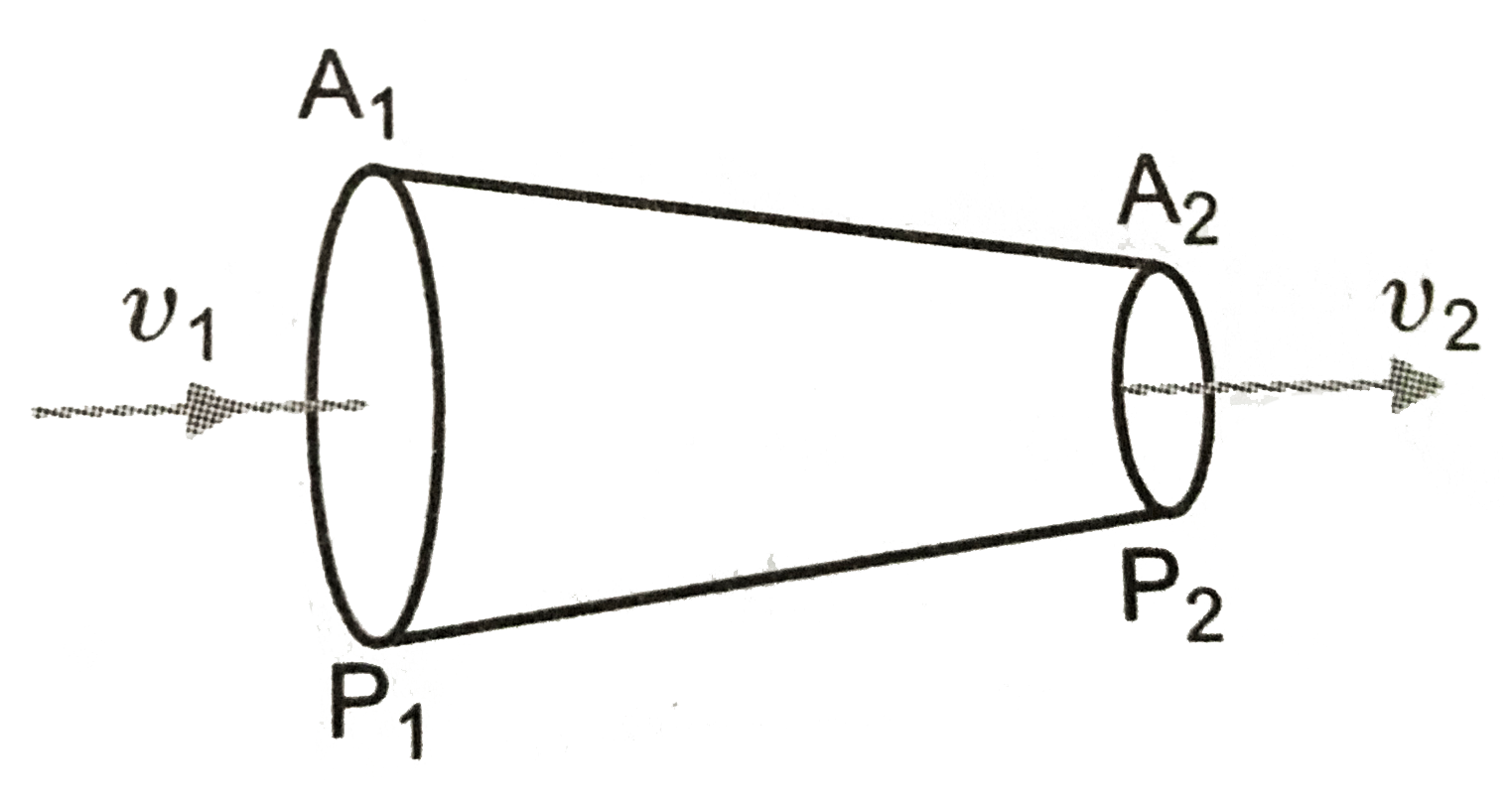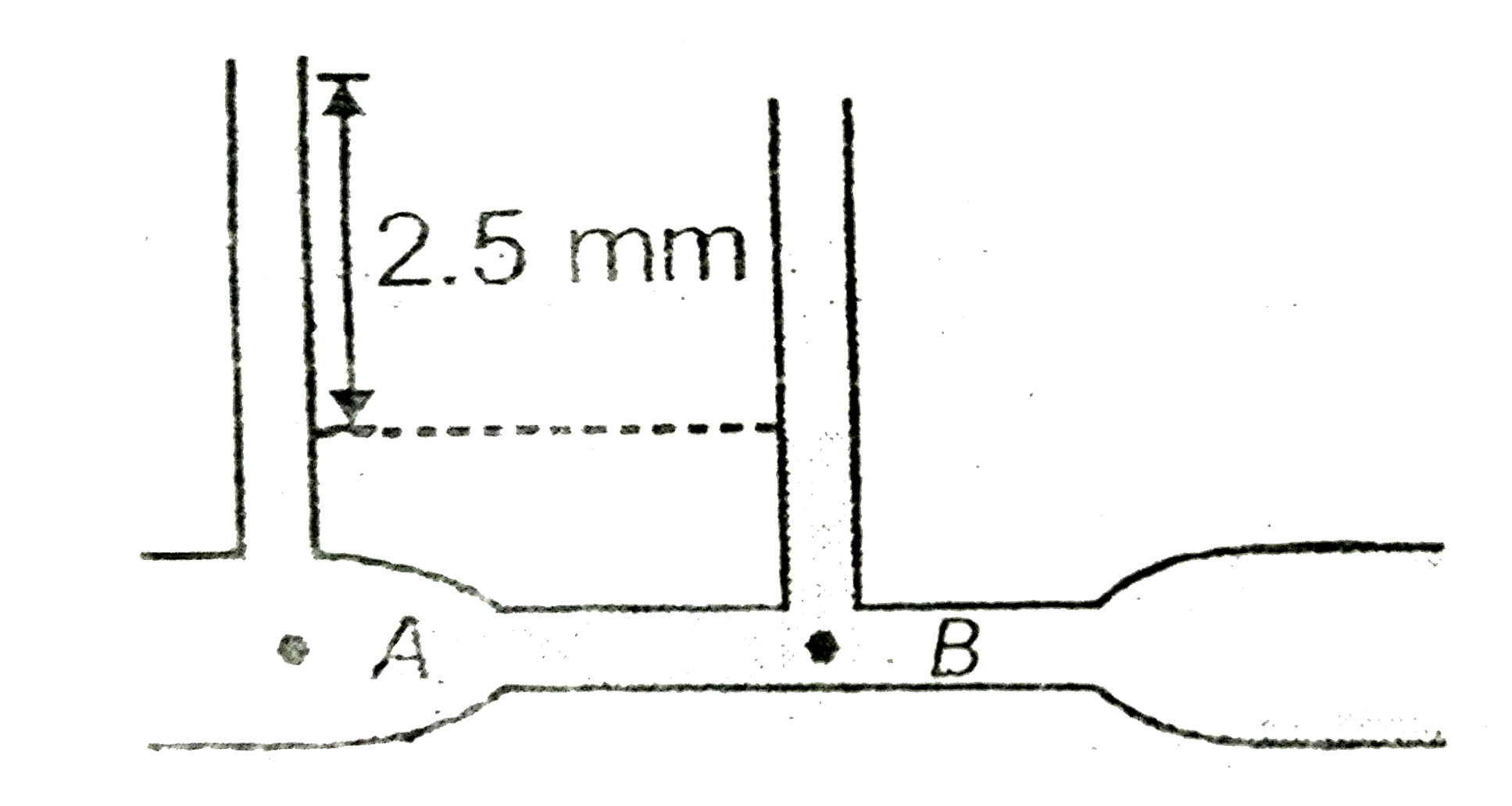Calculate the rate of flow of glycerine of density 1.25×103kgm−3 through the conical section of a pipe, if the radii of its ends are0.1 m and 0.04 m and the pressure drop across its length is 10Nm−2.
The correct Answer is:[6.28×10−4m3s−1]
From equation of continuity, Fig. 67(c).26.

v2v1=A1A2=π(0.1)2π(0.04)2=254
or v2=(25/4)v1=6.24v1
From Bernoulli's Theorem for a horizontal tube
P1+12ρv21=P2
or v22−v21=2(P1−P2)/ρ=2×10/(1.25×103)=16×10−3
or (6.25v1)2−v21=16×10−3.
On solving, we get, v1=0.02−05ms−1 ltbr> Thus rate of flow of glycerine througgh the tube
R=A1v1=A2v2=π(0.1)2×0.02
=6.28×10−4m3s−1
Topper's Solved these Questions
- BOOK - PRADEEPCHAPTER - PROPERTIES OF BULK MATTEREXERCISE - Multiple choice questions-II14videos
PROPERTIES OF BULK MATTER
- BOOK - PRADEEPCHAPTER - PROPERTIES OF BULK MATTEREXERCISE - Multiple choice questions-I173videos
PROPERTIES OF BULK MATTER
- BOOK - PRADEEPCHAPTER - PROPERTIES OF BULK MATTEREXERCISE - Fill in the Blanks E10videos
PROPERTIES OF BULK MATTER
- BOOK - PRADEEPCHAPTER - PHYSICAL WORLD AND MEASUREMENTEXERCISE - Competiton Focus Jee Medical Entrance18videos
PHYSICAL WORLD AND MEASUREMENT
- BOOK - PRADEEPCHAPTER - RAY OPTICSEXERCISE - Problem For Practice(a)25videos
RAY OPTICS
Similar Questions
Calculate the rate of flow of glycerine of density 1.25×103kg/m3 through the conical section of a pipe if the radii of its ends are 0.1m and 0.04 m and the pressure drop across its lengths is 10N/m2.
View SolutionCalculate the rate of flow of glycerine of density 1.20 ×103kg/m3 through the conical section of a pipe. If the radii of its ends are 0.1 m and 0.02 m and the pressure drop across the length is 10 Nm2.
 View Solution
View Solution
Knowledge Check
- Question 1 - Select One
The radii of curvatures of a convex lens are 0.04 m and 0.04m. Its refractive index is 1.5. Its focal length is
A0.04 mB0.4 mC4mD40 m - Question 2 - Select One
A thick rope of rubber of density 1.5×103kgm−3 and Young's modulus 5×106Nm−2, 8 m in length, when hung from ceiling of a room, the increases in length due to its own weight is
A96×10−3mB19.2×10−5mC9.4cmD9.6m - Question 3 - Select One
To what height does a liquid of density 0.4×103 kg m−3 and surface tension 0.05 Nm−1 rise in a capillary tube of radius 0.2 mm when dipped in ? [Given cosθ=0.4g=10ms−2]
A25 cmB15 cmC5 cmD20 cm
Calculate the rate of flow of glycerine of density. 1.25×103kg/m3 through the conical section of a pipe. If the radii of its ends are 1.0m and 0.04m and the pressure drop across its length is 10N/m2.
View SolutionCalculate the moment of inertia of a cylinder of length 1.5m, radius 0.05m and density 8×103kg/m3 about the axis of the cylinder.
View SolutionIn the figure shown below, a fluid of density 2×103 kg m−3 is flowing in a horizontal pipe. The speed of water at point A is 4 cm s−1, what is its speed at point B?
 View Solution
View SolutionCalculate the rate of flow (volume per second) of a liquid through a capillary tube of diameter 0.20×10−3m and length 1m,η=3.00×10−5Nm−2s and pressure gradient = 10 atm.
View SolutionA conductor of mass 0.50 kg and density 9×103kgm−3 has a resistance of 0.015Ω . Calculate the length of the conductor if its shape is cylindrical and the resistivity of its material is 1.8×10−7Ωm.
View Solution
